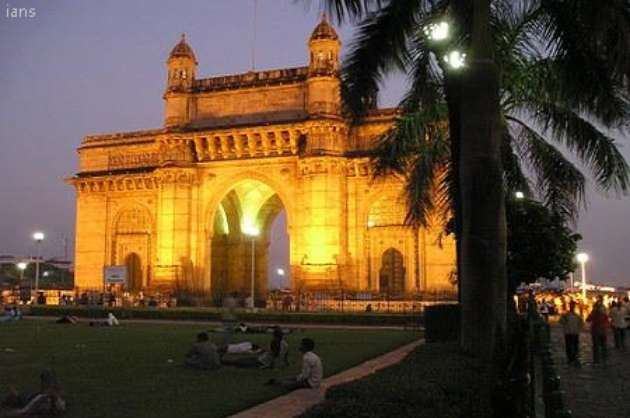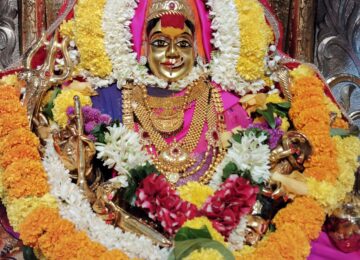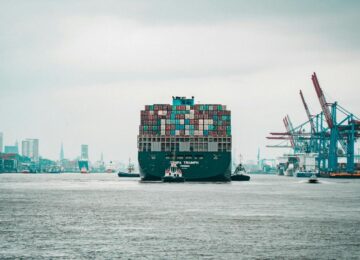Anupama Nair
www.mediaeyenews.com
I had written about the British came to do trade in India and gradually their imperialistic dream was established. Gradually the three cities – Mumbai, Calcutta and Madras came under their rule.
Bombay (1661—1947):
Bombay, also called Bombaim in Portuguese, is now the financial and commercial capital of India and one of the most populous cities in the world. It was once an archipelago of seven islands, obtained by the Portuguese through the Treaty of Bassein (1534), from the Sultan Bahadur Shah of Gujarat, the island group would later form part of the dowry of Catherine of Braganza, daughter of King John IV of Portugal. Her ‘Marriage Treaty’ gifted the islands to Charles II of England, along with the port of Tangier, trading privileges in Brazil and the Portuguese East Indies, religious and commercial freedom for English residents in Portugal, and two million Portuguese crowns (about £300,000), on completion of the marriage. The Islands of Bombay were regarded as a political and financial liability and were leased by Charles, to the English East India Company, on 27 March 1668, for a nominal amount of £10.
On 18 January 1665, King Charles II granted Humphrey Cooke the possession of Bombay. However, Salsette, Mazagaon, Parel, Worli, Sion, Dharavi, and Wadala still remained under the possession of the Portuguese. Much later Cooke managed to acquire Mahim, Sion, Dharavi, and Wadala for the English. Sir Gervase Lucas, 1st Baronet, who was appointed Governor of Bombay on 5th November 1666, reported that Bombay included all the islands except Colaba and Old Woman's Island. Sir George Oxenden became the first Governor of Bombay under the regime of the English East India Company. Gerald Aungier, became Governor of Bombay in July 1669, established the mint and printing press in Bombay and developed the islands into a center of commerce. He also offered various business incentives, which attracted various communities like Gujuratis, Parsis, Dawoodi Bohras, and Jews. On 20th February 1673, Rickloffe van Goen, the Governor-General of the Dutch East India Company attacked Bombay, but the attack was resisted by Aungier. The Treaty of Westminster (1674), concluded between England and the Netherlands, relieved the English settlements in Bombay of further apprehension from the Dutch.
In 1682, the Company fortified the Middle Ground Coastal Battery isle in the archipelago to curb the sea piracy in the area. Yakut Khan, the Siddi admiral of the Mughal Empire, landed at Sewri and burn down Mahim. By 15th February 1689, Khan conquered almost the whole island, and razed the Mazagon Fort in June 1690. The East India Company was forced to pay Aurangzeb, the ruler of the Mughal Empire, Yakut evacuated Bombay on 8th June 1690. In 1715, the construction of Bombay Castle was finished, which fortified the island of Bombay from sea attacks by the Portuguese and Mughals. Charles Boone became the Governor of Bombay, in 1715 and constructed the St. Thomas Cathedral in 1718, which was the first Anglican Church in Bombay. In 1737, Salsette was captured by the Maratha Empire and most of the Portuguese provinces in Bombay was surrendered to the Marathas in 1739. In 1753, the Naval Dockyard was opened which remains the oldest docks in the city. The first land-use laws were also enacted in Bombay during this period. The British occupied Salsette in 1774, which was formally ceded to the British East India Company by the Treaty of Salbai signed in 1782. In 1803, Bombay was hit by a severe famine, which led to a large-scale emigration. On 5th November 1817, the British East India Company defeated Bajirao II, the Peshwa of the Maratha Empire, in the Battle of Kirkee which took place in the Deccan Plateau.
Later on, Bombay became the center of Nationalist Movements with great leaders like Tilak, Veer Savarkar and Gokhale. Finally in 1947 Bombay also became free.
Calcutta (1644—1947)
There is a long story behind the arrival of the East India Company in Bengal, These incidents are documented in numerous records of the East India Company and by several authors These documents tell the story of how the English were severely beaten and wiped out from Bengal several times by the forces of the Mughal Emperor and how each time they came back to Bengal to continue their trade. The agents of the East India Company first visited the provinces of Bengal and Bihar for trade during the period of Ibrahim Khan, the Governor of Bengal at the time of Mughal Emperor Jahangir. The first factory was established in Surat in 1620 and later in Agra, and agents were further sent from these places to the eastern provinces to examine the possibility of opening factories there. However, the transportation costs and logistics were unfavorable and the plan was abandoned. In January 1644, the daughter of the Emperor was severely burnt and a doctor named Gabriel Boughton, formerly the surgeon of the East Indiaman Hopewell, was sent from Surat for her treatment.
He was able to successfully treat her burns and in reward the Emperor allowed the company to establish factory at Pipili, Odisha, and for the first time English ships arrived at an eastern port. During 1638, Shah Jahan appointed his son Shah Shuja as the Subahdar of Bengal and Boughton visited the capital at Rajmahal where his services were again used to treat one of the ladies in the palace, and in return, the company was allowed to establish factories in Balasore, Odisha and Hooghly. Shaista Khan was appointed as the governor of Bengal in around 1664 by Mughal Emperor Aurangzeb and was relieved upon his request in around 1682. While he was returning to Delhi, Englishmen sent with him a request to the Emperor to obtain a special request to do business forever in Bengal and the Emperor was pleased to provide them the request, and the occasion was celebrated with a 300-gun salute at Hooghly. The investment in Bengal soared, the Bengal presidency was separated from Madras and Mr. Hedges was appointed as the chief officer to oversee trade in Bengal. His residence in Hooghly was secured with soldiers obtained from Madras. This is the first time English soldiers came on the soil of Bengal.
In 1690, Job Charnok, an agent of the East India Company chose this place for a British trade settlement. The site was carefully selected, being protected by the Hooghly River on the west, a creek to the north, and by salt lakes about two and a half miles to the east. There were three large villages along the east bank of the river Ganges, named, Sutanuti, Gobindapur and Kalikata. These three villages were bought by the British from the local land lords. The Mughal emperor granted East India Company freedom of trade in return for a yearly payment of 3,000 rupees.
Madras (1639—1947)
On 22 August 1639, English official Francis Day obtained a grant of a 3-mile-long strip of land for the East India Company from the local ruler, Damarla Venkatadri Nayaka, the Nayaka of Wandiwash. This land was a fishing village called Madraspatnam. This grant, given for 2 years, authorized the company to build a fort and a castle there. This would later grow into the modern-day metropolitan city of Chennai. After securing the grant from the Nayaka, Francis Day and his superior in the company Andrew Cogan reached Madraspatnam on 20th February 1640 when the first actual settlement of the British started. In 1642, the grant was renewed. A new grant was signed in 1645 between the English and the new Raja which empowered the English to enact English Common Law among the settlers and to administer civil law among the settlers and also the local population in the settlement. This third grant further added land to Madraspatnam. The British built a fort in the settlement and was called Fort St. George. Residences were built within the fort and this soon attracted other traders, both Indians and Europeans to it. The fort and some areas around it which were acquired by the company came to be called the Fort St. George settlement.
As per the rules of the Nayaka, the Europeans in the area were not allowed to decorate their houses with any color other than white. Hence, this area came to be called the ‘White Town’. The surrounding areas were populated by Indians who came in large numbers to partake in the commercial activities. Because of frequent riots between the local population and the Europeans, their respective areas were demarcated as ‘White Town’ and the ‘Black Town’. Fort St. George, White Town and Black Town were together called Madras. Andrew Cogan and Francis Day can be considered the founders of Madras.
Various areas which are now part of the city of Madras like Triplicane, Nungambakkam, Purasawalkam, Mylapore, Chennapatnam, etc. were later on added by the British in the 18th and early 19th centuries. Chennai was attacked by General Mir Jumla in 1646. In 1687, the region fell under the direct rule of the Mughal Emperor in Delhi. The Mughal Emperor issued Firmans which restored rights to the East India Company. The town was then ruled by British governors. The first president of Fort St. George was Elihu Yale. During his time as president from 1687 to 1692, many European settlers came to the region. This led to the establishment of a corporation and the institution of Mayor for Madras. Yale amassed a lot of wealth during his stint here. He later became a benefactor of the Collegiate School in the Colony of Connecticut (British America). This was later renamed Yale University
Madras was briefly controlled by the French from 1746 to 1748 after the Battle of Madras. which happened during the War of the Austrian Succession in Europe when French-English rivalry was going on. British captured it back as per the Treaty of Aix-la-Chapelle. Madras was an important place for the colonialists because of the port there. The city became an important trading center between India and Europe after the development of the harbor.




























